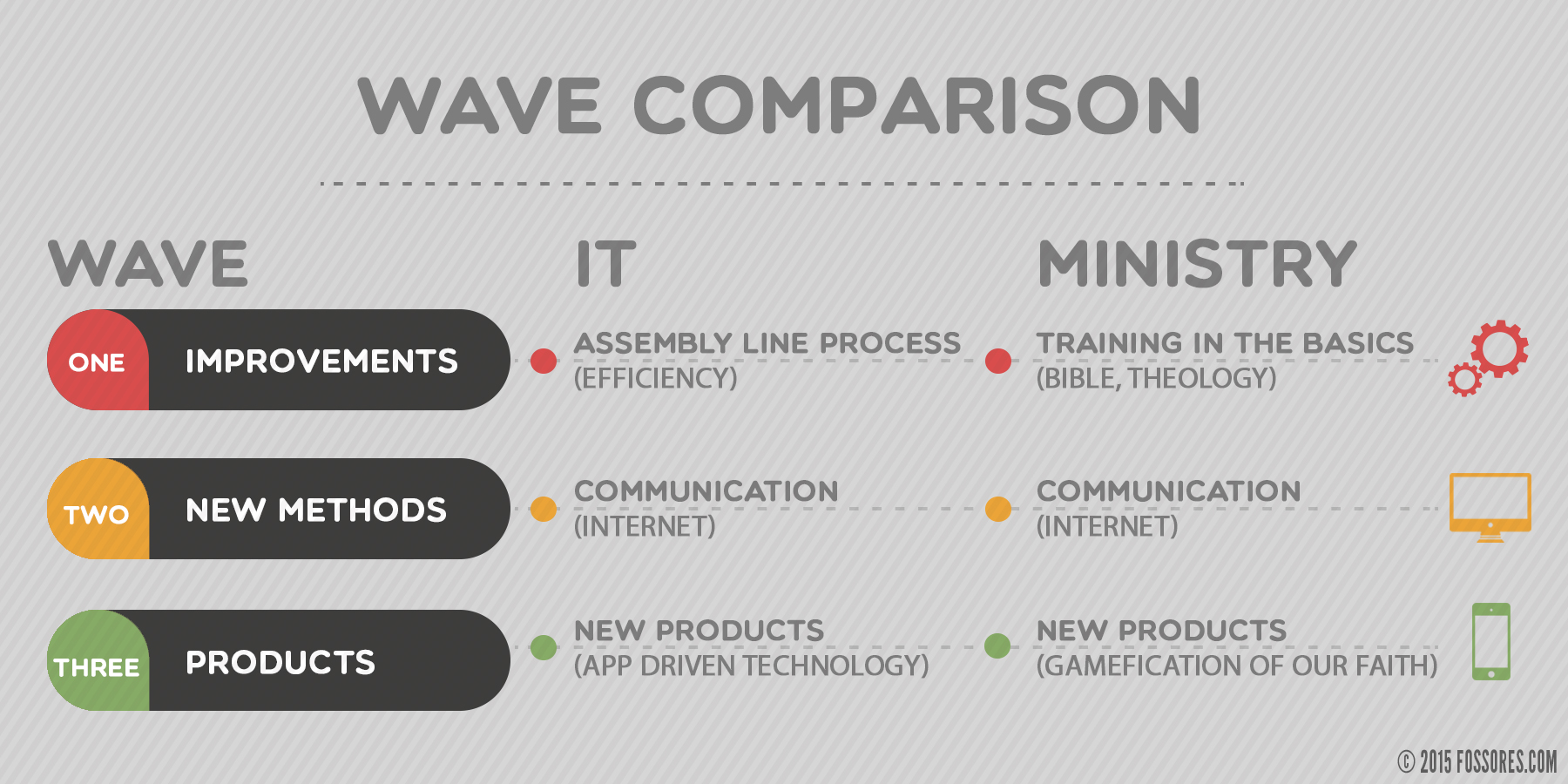For Christmas, Santa brought my son Anki Drive. It’s a modern twist on slot cars, where two cars zip around a magnetic track controlled by your iPhone. The phone automatically controls up to three other cars so you can play by yourself while still having competition. The cars fire lasers, use tractor beams, and boast of their comparative exploits at the end of each round.
Santa brought my daughter a climbing rope, which was more expensive that the fancy cars. That’s right. Anki Drive—the single most complicated, hyper-linked, technologically advanced toy ever—cost less than rope.
Technologists are referring to products like my son’s Christmas gift as the “Third Wave” of IT. The First Wave centered on improvements to the assembly line process—making things more precise, more efficient, etc. The Second Wave centered on new methods of communication—this is the IT revolution with which we are most familiar, the Internet. The Third Wave centers on creating new products—self-driving cars, App-driven thermostats and grocery lists, 3-D printers, etc.
I’m struck by the similarities between IT and ministry. We have some “assembly-line” processes in Christianity, and while I used to think they were passé, I now understand that every Christian really does need training in the basics: reading and understanding the Bible, basic theology, a practical acceptance of personal holiness, etc. We also place great value on communication between branches, denominations, and missiological enterprise—in this, the web has been an almost synonymous opportunity in both style and substance for the church and the world. And our Third Wave products—the App-driven spirituality that’s become increasingly common, the gamefication of our faith, etc.—is only going to grow in “market-share” within the church.
But we should never forget that for every Nest, Pulse, MakerBot, or Anki Drive, there will still be Tide bottles, toilet paper rolls, carburetors, and toothbrushes.
The biggest danger I see amongst innovators (like myself) is that our affection for the Third Wave will create an increasing amount of hostility and disdain for waves One and Two.
The latest may, in fact, be the greatest; but the greatest is never the only. Sometimes, the first is last (Matthew 20.16).
Design elements for diagram taken from freepik.com.
fossores
Related posts
Categories
Category Cloud
Tag Cloud
Recent Posts
- Victors and Victims November 6, 2018
- 3 Hacks for Happiness October 29, 2018
- Hope Against Death September 20, 2018
- The Shape Of The Cross September 19, 2018


